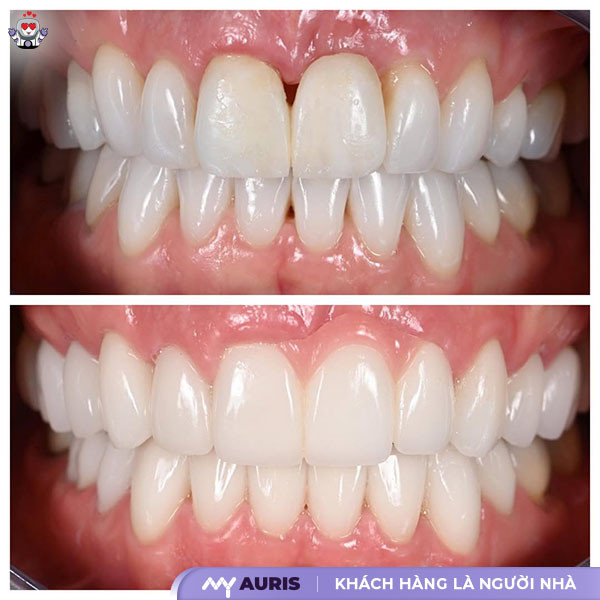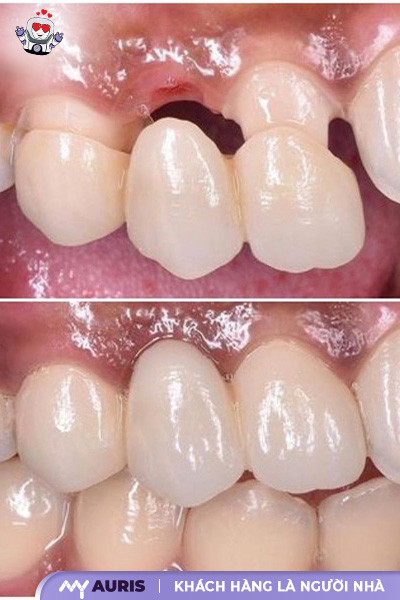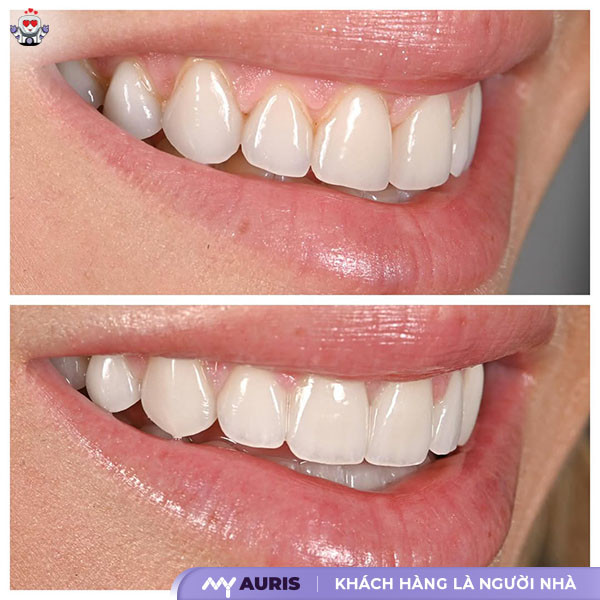Irregularly grown teeth, slight overbite or underbite, yellowed teeth, decayed teeth, or teeth that have undergone root canal treatment are all cases where porcelain crowns should be used to restore function and enhance dental aesthetics. This is a modern dental method that significantly improves smiles and chewing ability.
When should you get porcelain crowns?
Porcelain crowning is a modern restorative solution that helps improve aesthetics, extend tooth lifespan, and restore chewing function. Below are common cases when you should consider getting porcelain crowns:
Deeply decayed teeth, pulpitis, or large fractures
When tooth decay is widespread or after pulpitis treatment, teeth often become weak and prone to fracture. Filling a tooth at this stage may no longer be strong enough to protect the remaining tooth structure. Porcelain crowns will help protect the tooth core, restore its shape, and ensure long-term chewing ability.
Damaged teeth that have undergone root canal treatment
After root canal treatment, teeth often lose moisture, become brittle, and are prone to fracture under pressure. Porcelain crowns help protect the teeth from external impacts, maintain occlusal stability, and extend their lifespan.

Gapped teeth, slightly misaligned teeth
Gapped teeth or slightly misaligned teeth can make you feel self-conscious when smiling. Instead of spending time on braces, you can opt for porcelain crowns to fill gaps and quickly adjust tooth shape, resulting in even, naturally beautiful teeth and a harmonious bite.
Slight overbite, underbite due to tooth misalignment
If an overbite or underbite stems not from jawbone structure but from tooth position, porcelain crowning is a solution to adjust tooth alignment. By minimally preparing the tooth enamel, new porcelain crowns are designed to fit precisely, improving both aesthetics and function.

Missing teeth, requiring a dental bridge
If you have missing teeth, especially several consecutive teeth, your dentist may recommend a porcelain bridge. This method uses adjacent teeth as abutments to restore the missing teeth, ensuring chewing ability and maintaining stability for the entire arch.
Severely stained teeth unresponsive to whitening
For cases of yellowed teeth, severe tooth discoloration due to antibiotic use, smoking, colored foods, etc., if teeth whitening does not improve the condition, then porcelain crowning will help make teeth brighter, uniformly colored, and durable over time.
Who should NOT get porcelain crowns?
Although porcelain crowning is a restorative method that enhances dental aesthetics and improves chewing function, not everyone is suitable for this technique. Below are cases where dentists advise against porcelain crowns to ensure long-term effectiveness and avoid complications.
Severe bite misalignment due to jawbone structure
If an overbite or underbite is caused by abnormalities in the jawbone structure (rather than by misaligned tooth eruption), cosmetic porcelain crowns will not be able to correct it. Grinding down the tooth stump to fix the crown also will not adjust the bite to the correct position. In this case, the patient needs jaw surgery to reposition the bone, which can then allow for stable restoration of tooth form and chewing function.
Overly sensitive teeth
If you have sensitive teeth, grinding down tooth tissue during the porcelain crowning process can make your teeth ache and uncomfortable when eating, especially with hot or cold foods. Therefore, dentists advise you to consider carefully or choose a more suitable method if tooth sensitivity persists.
Loose teeth
When a tooth is loose, it means the tooth root has weakened and can no longer support a crown. If you attempt to crown a loose tooth, it will not only fail to improve aesthetics or chewing function but also accelerate damage to the tooth root. The optimal solution is to extract the tooth and proceed with a dental implant for comprehensive restoration.
Severely decayed teeth, periodontitis, or severe infection
When a tooth is severely decayed, has pulpitis, periodontitis, or a severe infection to the point where it cannot be preserved, porcelain crowning will not provide an effective treatment. In this situation, the dentist will recommend tooth extraction and proceed with dental restoration using new tooth replacement methods (such as dental implants or a porcelain bridge) to ensure long-term oral health.

Benefits of Porcelain Crowns: A Comprehensive Dental Restoration Solution
Porcelain crowning is not just a cosmetic procedure; it is also an optimal solution for repairing tooth damage, offering numerous superior benefits for oral health and aesthetics.
Enhanced chewing function
Porcelain crowns have high durability, 4-5 times stronger than natural teeth. While natural teeth can withstand forces of only 200-300Mpa, porcelain crowns can withstand up to 900Mpa. As a result, using porcelain crowns significantly improves chewing efficiency, allowing for more comfortable eating without worrying about dietary restrictions.
Protecting natural teeth from cavities
When crowned, the natural tooth is encased by a porcelain crown like a sturdy ‘armor,’ helping to prevent bacterial attack and recurrent decay. This is an effective method to maintain oral hygiene and extend tooth lifespan.
Improved speech clarity
Changes in pronunciation and unclear speech often stem from irregular tooth structure. Porcelain crowning helps reshape the teeth, thereby improving pronunciation and helping you communicate more confidently in work and daily life.
Comfortable and convenient, no hassle like braces
Unlike braces, which can cause discomfort with brackets, porcelain crowning offers a comfortable feel and does not impede mouth muscle activity. In just about 5-7 days, you can achieve a new, confident smile. Additionally, oral hygiene after crowning is simple and does not require much time or effort.





